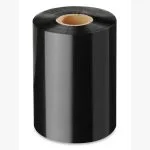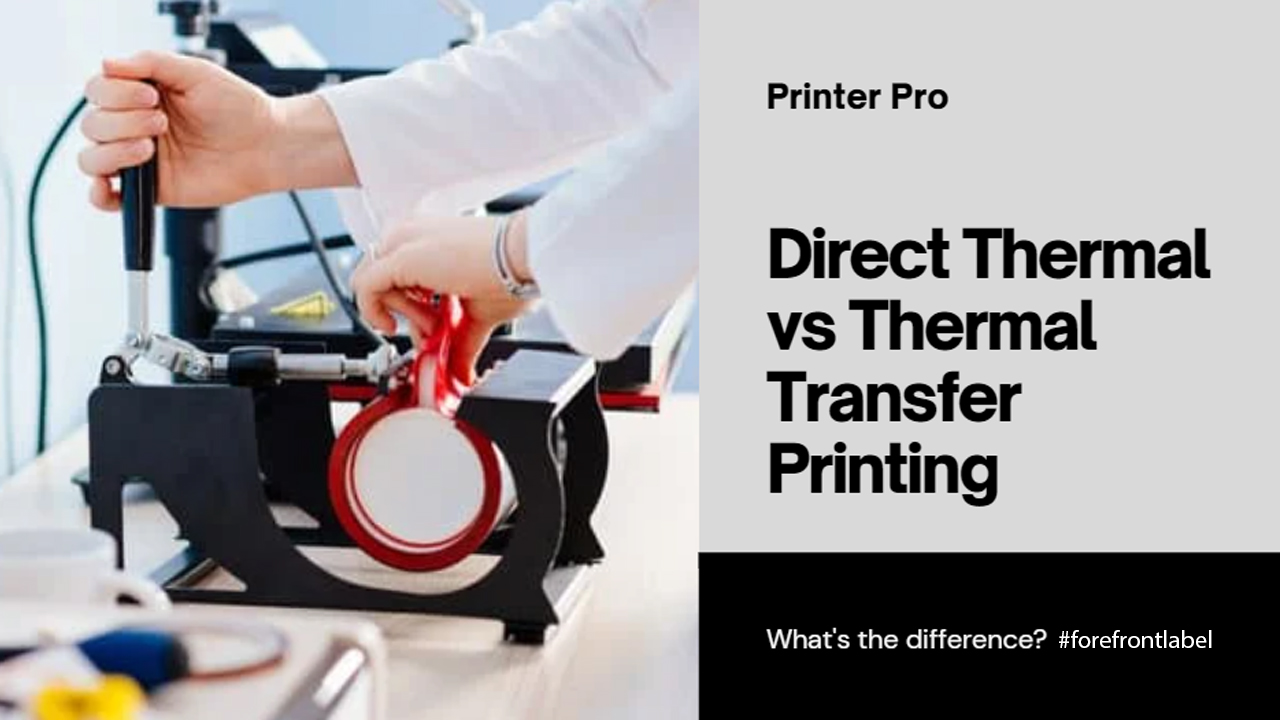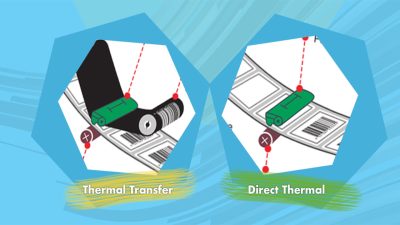Direct thermal Vs Thermal Transfer : Direct thermal and thermal transfer are two common methods used in printing, particularly in label printing, each with its own advantages and applications.
What is Direct Thermal Technology
Direct Thermal Technology is a printing method that utilizes heat-sensitive papنer to produce images without the need for ink or toner. The heat from the print head causes a chemical reaction in the paper, resulting in the desired image or text. This technology is commonly used in receipt printers, shipping labels, and other applications where cost-effective, high-speed printing is essential.
Pros of Direct Thermal Technology
- Cost-Effective: One of the significant advantages of direct thermal technology is its cost-effectiveness. Since it does not require ink or toner, the ongoing expenses associated with traditional printing methods are eliminated.
- Low Maintenance: Direct thermal printers are relatively simple devices with fewer moving parts, leading to lower maintenance requirements and reduced downtime.
- High Print Speed: Direct thermal technology excels in high-speed printing applications, making it ideal for environments where quick, on-demand printing is necessary.
- Ease of Use: With minimal setup requirements and straightforward operation, direct thermal printers are user-friendly and suitable for various printing needs.
- Environmentally Friendly: Since direct thermal printing does not involve ink cartridges or ribbons, it is considered more environmentally friendly than other printing methods.
Cons of Direct Thermal Technology
- Limited Durability: Direct thermal prints are susceptible to fading when exposed to heat, light, or chemical contaminants, making them less durable compared to prints from other technologies.
- Special Paper Requirement: Direct thermal technology relies on specially coated paper that is heat-sensitive, limiting the type of media that can be used with these printers.
- Not Ideal for Long-Term Storage: Due to the fading issue, direct thermal prints are not recommended for long-term storage or archival purposes, as the print quality may degrade over time.
- Limited Color Options: Direct thermal printers typically produce monochromatic prints, limiting the color options available for printing applications that require color images or text.
- Prone to Image Distortion: Direct thermal prints are susceptible to image distortion or blurring if exposed to excessive heat or pressure, potentially affecting the overall print quality.
What is Thermal Transfer Print Technology
Thermal transfer printing is a widely used technology that involves applying heat to a ribbon that melts ink onto paper. It is commonly used in industries such as manufacturing, healthcare, and logistics for printing labels, tags, and barcodes.
Pros of Thermal Transfer Print Technology
- High-Quality Printing :
Thermal transfer printing produces high-quality, durable prints that are resistant to fading and smudging. This makes it ideal for applications that require long-lasting labels or images. - Versatility :
Thermal transfer printers can print on a variety of materials, including paper, film, and synthetic materials. This versatility makes them suitable for a wide range of applications. - Longevity :
Prints created using thermal transfer technology are resistant to chemicals, water, and harsh environments. This ensures that important information remains legible even in challenging conditions.
Cons of Thermal Transfer Print Technology
- Cost:
Thermal transfer printers can be more expensive to purchase and operate compared to other printing technologies. The cost of consumables, such as ribbons and labels, can also add up over time. - Speed:
While thermal transfer printing produces high-quality prints, it is not the fastest printing method available. For high-volume printing applications, users may experience slower printing speeds compared to other technologies. - Ribbon Changes:
One of the drawbacks of thermal transfer printing is the need to frequently change ribbons when switching between different colors or materials. This can be time-consuming and lead to interruptions in the printing process.
this was Direct thermal Vs Thermal Transfer you can find more article in our blog

















